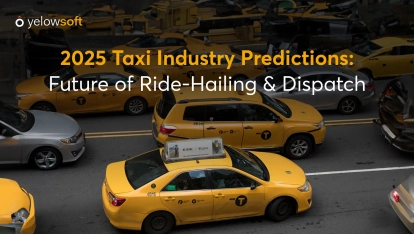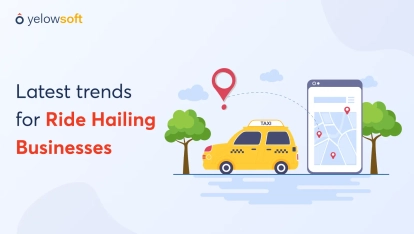Ride-hailing services have been nothing less than a boon for daily commuters across the world. These services became an instant success by offering unparalleled speed, convenience, and safety to their customers. And that’s the reason why commuters across the world prefer using on-demand cab booking services instead of public transit.
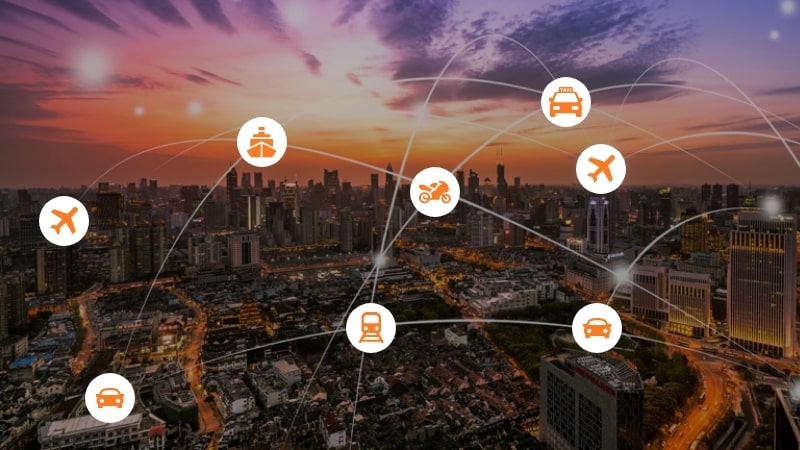
The history of app-based ride-hailing services is not very long. It all started with a San Francisco based company named Uber which was launched in 2009. Soon, Uber became a shining beacon of on-demand services across industry verticals. Today Uber is valued at more than $78 billion.
Many names like Lyft, Grab, Didi Chuxing, Ola, and many others followed Uber’s footsteps and became ride-hailing giants in their respective regions thus disrupting the transportation sector across the world. However, this rapid increase in the number of ride-hailing players has also given birth to several conflicts and controversies.
The first of them is between ride-hailing services and the traditional cab services as the latter feel that the former has leveraged an undue advantage since they don’t face strict regulation from authorities like them.
Interestingly, traditional cab services are not the only ones who find themselves in this situation. Mass transit or public transport is another sector that is facing a similar issue. This is because commuters are preferring ride-hailing services over mass transit for their daily commute.
Masabi, which is a prominent mobile ticketing service conducted a survey on 1000 adults in the United States. Interestingly, in the report, more than 35% of the respondents said that they were occasionally combining public transit and ride-hailing services on weekly basis.
Another report by Dr Regina Clewlow of the University of California found that 49 out of 61 percent of ride-hailing trips wouldn’t have been possible at all, or would require walking, transit, or biking. This report suggests the extent to which ride-hailing services like Uber and Lyft are replacing other modes of transit.
Other data suggests that Public transit ridership has declined 31 out of 35 major US metropolitan areas in 2017. Furthermore, 2017 was also considered the lowest year of the overall transit ridership. The previous lowest ridership was recorded way back in 2005.
On one hand, the ridership of mass transit has decreased, whereas on the other hand ride-hailing services have increased by manifolds. This clearly shows a shift from mass-transit to ride-hailing services.
Substitution of ride-hailing on public transit: A research by SMART
The Singapore-MIT Alliance for Research and Technology (SMART) along with Future Urban Mobility Interdisciplinary Research Group and Massachusetts Institute of Technology (MIT) JTL Urban Mobility Lab conducted a study to measure the extent of substitution ride-hailing on public transit.
For their study, they used Didi’s data in Chengdu, China. To understand the possible substitution or complementary relationship between public transit and ride-hailing, they took three main factors which were:
- Travel time difference
- Service quality
- Transit coverage
The study found that almost one-third of the DiDi trips were potentially substituted for public transit.
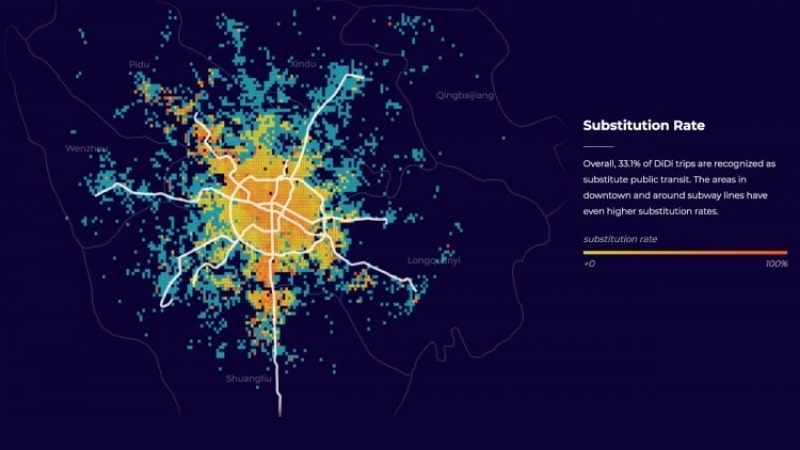
The above image shows the temporal and spatial variations of substitutions. Some key points here to look for are that the substitution rate was quite higher during the daytime from 8 AM to 6 PM. It was also found that it was more significant in the centre of the city. Similarly, the rate of substitution decreased in the evening due to a decrease in the transit supply.
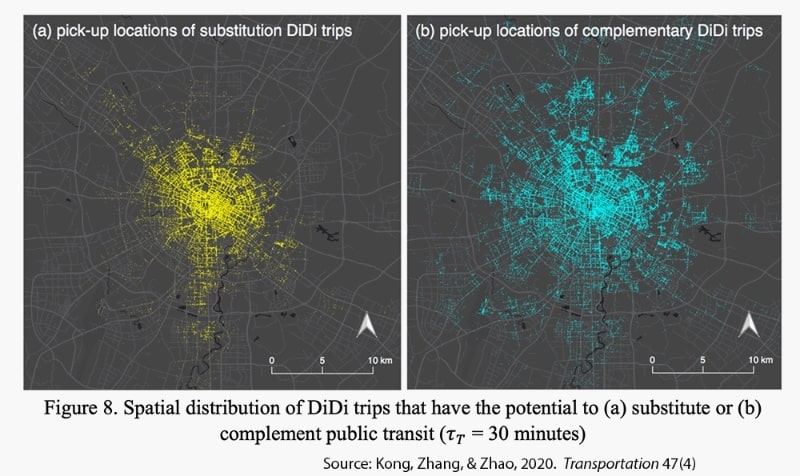
The other interesting findings showed that areas that were in closer proximity to subway stations and those that had high housing prices were associated with higher substitution rates.
These findings show that mass transit agencies can look for a possible collaboration with Transportation Network Companies (TNCs) for first/last mile connection improvement. Although, they must remember that ride-hailing also substitutes for public transit. That’s why they must take all the precautions before partnering with TNCs.
High substitution rates in the heart of the city also indicate that there is a need for ride-hailing regulations such as strategic pricing and spatial quotas. Similarly, the lower substitution rates in the suburban areas highlight the need to implement new transit lines.
The below graph gives crucial insights into the complementary and substitutionary nature of ride-hailing services in the city.
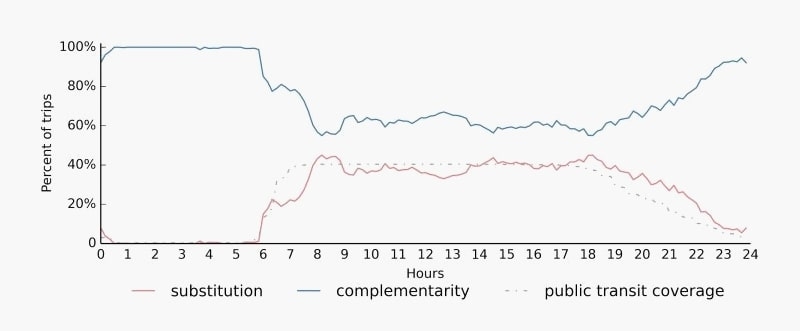
Ride-hailing can also complement public transit
It’s true that ride-hailing services have emerged as a better alternative to public transit and it’s substituting it in many parts of the world. However, if done properly, ride-hailing can also be used to complement public transit.
As per a survey by UC Berkeley, around 4 per cent of Uber and Lyft users ended their rides at the transit stations. This means that they were using ride-hailing services as a mean to reach transit stations. This also indicates that ride-hailing can prove to be an effective means to connect to transit stations.
To achieve this, local governments and agencies can work in tandem with ride-hailing services to improve public transit services. For example, ride-hailing services can play a major role in dealing with transportation demand shocks which are caused by temporary disruptions such as closures of subway stations for maintenance purpose.
Also, an increase in the usage of ride-hailing has many positives. For example, it increases mobility thus improving the access to healthcare, jobs, and education. Furthermore, many people use these services in the night time as the transit options are not easily available.
As per UT Austin study, ride-hailing has also resulted in lowering the fatal drunk driving crashes by almost 10 to 11 per cent. Ride-hailing is also disabled and elderly-friendly as they offer greater independence to them.
Transit agencies can leverage the services of ride-hailing companies to serve low-density areas that are sparsely populated with schedules and fixed routes. Many private ride-hailing companies and public transit agencies have also launched around 50 pilot projects to tap these opportunities.
Similarly, there are many transit agencies that are subsidizing travel ride-hailing vehicles for meeting a certain rider group’s needs.
A study on how ride-hailing complements public transit?
To understand the relationship between ride-hailing and public transit there was another study carried out by Jonathan Hall of the University of Toronto. This study came with interesting results. Overall, it suggested that ride-hailing is mostly complementing than posing a threat to the public transit agencies.
To conduct this study, Mr Hall along with his co-authors used transit ridership data of around 200 US cities. All these cities and towns that were taken into consideration had the presence of ride-hailing giant Uber.
They found out that the increase in Uber’s market penetration resulted in an increase of 1.38 per cent in the ridership. Researchers also told that the effect of Uber on the transit ridership grew slowly as it caused a 5% increase in the next two years.
According to Hall, Uber seems like a medicine to the transit instead of an existential threat. The result of the study also showed that Uber increased transit ridership in bigger cities, whereas, it decreased the ridership in the smaller MSAs (Metropolitan Statistical Areas).
More interestingly, the results differed based on factors like mode of transportation and size of the transit agency. For example, Uber seems to help bus ridership slightly more than that of a train. Also, the study pointed out that Uber helped larger transit agencies in comparison to the smaller ones.
One of the major reason why Uber and other ride-hailing companies haven’t been able to steal a huge number of passengers from public transit is that transit is way cost-efficient than Uber. The median Uber fare is five times more than that of public transit.
Conclusion
Ride-hailing businesses might seem like a competitor to public transit. But, in this blog, we saw that it’s not a complete truth. Ride-hailing businesses have proved to be detrimental for public transit in few instances. Whereas, in other instances, they have assisted public transit.
In a nutshell, it’s safe to say that ride-hailing will continue to pose threat to the public transit system until and unless transit systems don’t upgrade themselves to provide services of a quality that are at par with the ride-hailing.
If the public transit succeeds to do so then they can leverage ride-hailing services to fix the first and last-mile connection. Companies like Uber and Lyft can add flexibility to the transit system instead of substituting them.
This would be the ideal scenario as it would give birth to a symbiotic relationship where both ride-hailing and public transit can gain mutual benefits.




